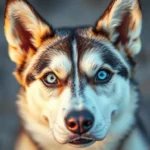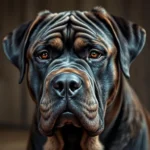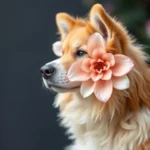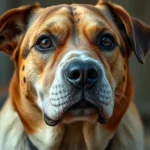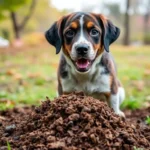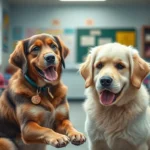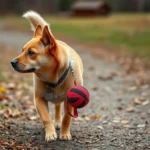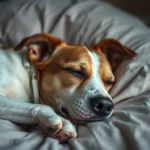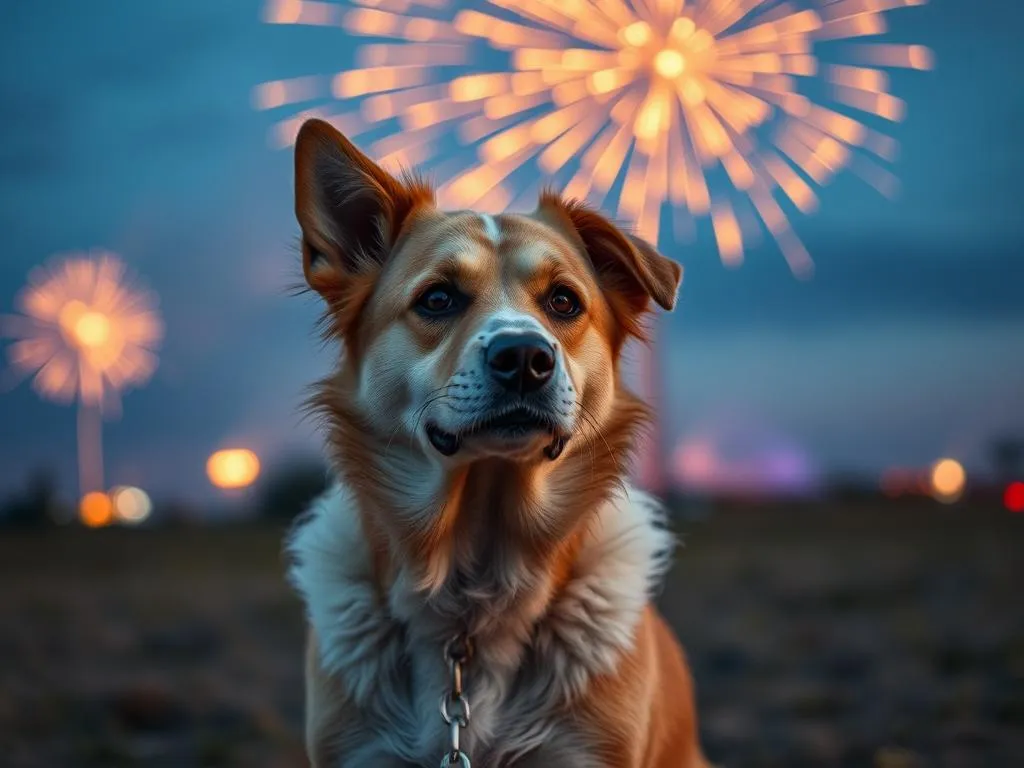
Fireworks can be a source of joy for many, but for dogs, they often spell distress. Statistics show that nearly 40% of dogs experience anxiety during fireworks displays. This fear can lead to severe anxiety, making it essential for pet owners to understand how to calm a dog during fireworks effectively. Not only does it protect their emotional well-being, but it also helps prevent potential harm to the dog or damage to property.
In this guide, we’ll explore calming techniques, preparation strategies, and care practices to ensure your furry friend stays as calm as possible during those loud celebrations.
Understanding Dog Anxiety
Signs of Anxiety in Dogs
Recognizing the signs of anxiety in your dog is crucial for addressing their needs during fireworks. Dogs may exhibit various common behaviors when they are scared:
- Barking: Excessive barking can indicate distress.
- Hiding: Many dogs seek refuge in small spaces or under furniture.
- Trembling: Shaking or trembling is a common physical sign of fear.
Additionally, you might notice physical signs such as:
- Panting: An increase in panting may indicate stress.
- Pacing: Dogs may walk in circles or pace back and forth.
- Aggression: Fear can sometimes lead to aggressive behavior towards other pets or people.
Emotional signs may include:
- Seeking Attention: Your dog might cling to you more than usual.
- Destructive Behavior: Chewing or scratching furniture can occur when they are anxious.
Why Dogs Are Afraid of Fireworks
Understanding why dogs react negatively to fireworks is key to helping them cope.
From an evolutionary perspective, loud noises can be perceived as threats. In the wild, sudden loud sounds could indicate danger, leading to a fight-or-flight response.
Moreover, dogs have a significantly broader hearing range than humans, allowing them to hear frequencies that we cannot. This heightened sensitivity makes the booms and bangs of fireworks particularly distressing.
Lastly, if a dog has had a traumatic experience related to loud noises in the past, such as thunderstorms or fireworks, they may associate those sounds with fear, reinforcing their anxious behavior.
Preparing for Fireworks
Create a Safe Space
Establishing a safe zone within your home can provide your dog with a comforting retreat during fireworks. Choose a quiet area, free from loud noises, and create a cozy environment by including:
- Blankets: Soft, familiar blankets can help your dog feel secure.
- Toys: Favorite toys can serve as distractions during stressful times.
Desensitization Techniques
Before the fireworks begin, using desensitization techniques can help your dog acclimate to loud noises. Gradual exposure to similar sounds can reduce fear responses. Start by:
- Playing recordings of fireworks at a low volume, gradually increasing the volume over time as your dog becomes more comfortable with the sounds.
Product Recommendations
Several products may assist in calming your dog during fireworks:
- Anxiety Wraps: These snug garments can help reduce anxiety by applying gentle pressure to the dog’s body.
- Calming Treats: Specially formulated treats with calming ingredients like chamomile can help soothe your dog.
- Soundproofing Options: Consider using white noise machines or earplugs to help muffle the sound of fireworks.
Day of the Fireworks
Pre-Fireworks Routine
On the day of the fireworks, establishing a pre-event routine can make a significant difference for your dog.
- Exercise and Play: Engage your dog in a vigorous play session or a long walk to help expend excess energy.
- Feeding Tips: It’s best to feed your dog several hours before the fireworks to prevent an upset stomach during the event.
During the Fireworks
It’s crucial to maintain a calm demeanor during the fireworks display. Dogs can sense their owner’s stress, which may exacerbate their anxiety. Here are some techniques:
- Keeping Calm: Practice deep breathing or meditation to stay relaxed.
- Distraction Methods: Provide toys, games, or turn on the TV to distract your dog from the noise.
- Pheromone Diffusers or Sprays: These products emit calming scents that can help soothe anxious dogs.
When to Seek Professional Help
Sometimes, despite your best efforts, your dog may still struggle during fireworks. Signs that indicate your dog might need professional assistance include:
- Severe Distress: Continuous whining or howling, or signs of aggression.
- Physical Symptoms: Excessive drooling, vomiting, or loss of bladder control.
If these signs are evident, consulting a veterinarian may be necessary, particularly to discuss medication options.
Post-Fireworks Care
Aftercare for Your Dog
After the fireworks have ended, it’s essential to continue providing support to your dog. Recognizing lingering anxiety is important, as some dogs may remain on edge even after the event.
- Comforting Techniques: Spend time with your dog, offer gentle petting, and talk to them in a soothing voice to help them relax.
Evaluating the Experience
Afterward, assess how well your strategies worked. Consider:
- What Worked: Identify which techniques effectively calmed your dog.
- What Didn’t: Acknowledge any methods that didn’t help and adjust for future events.
Maintaining a calm environment post-event will also aid your dog’s recovery from the stressful experience.
Long-term Solutions
Consistent Training Techniques
Long-term anxiety reduction requires consistent training. Implement positive reinforcement techniques to help your dog cope better with loud noises in the future.
- Create a Routine: Incorporating relaxation techniques, like deep pressure training or quiet time, into your dog’s daily routine can foster a sense of security.
Building a Stronger Bond
Strengthening the bond between you and your dog can also help reduce anxiety. Activities that promote trust and companionship include:
- Regular Playtime: Daily interactive play can enhance your dog’s confidence.
- Training Sessions: Regular obedience training helps build communication and trust.
Conclusion
Calming a dog during fireworks is a challenge many pet owners face, but with preparation and care, you can help your furry friend cope. From creating a safe space and using desensitization techniques to providing aftercare and building a stronger bond with your dog, every step counts towards reducing anxiety.
With the right strategies, you can ensure that your dog feels secure and loved, even amidst the loud noises of fireworks. Remember, each dog is unique, so it may take time to find the perfect combination of techniques that work for your pet. With patience and understanding, you can help your dog navigate the fireworks season with confidence and ease.
